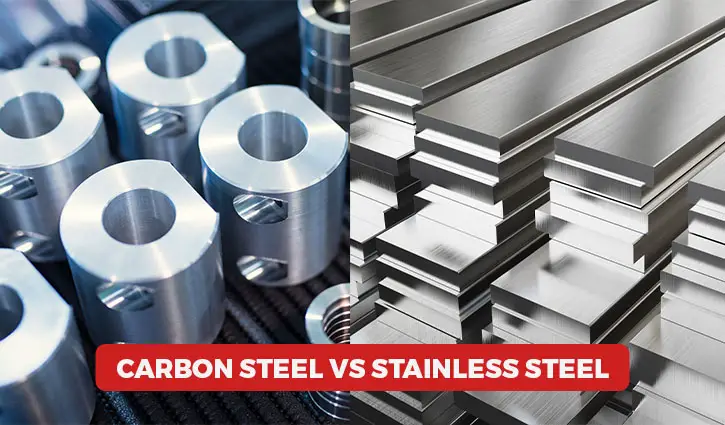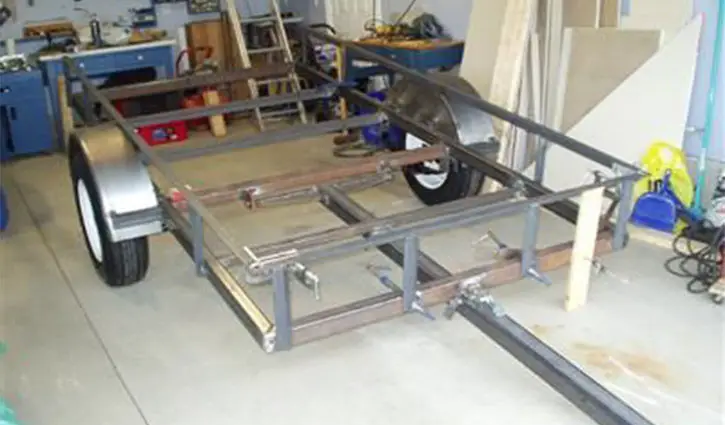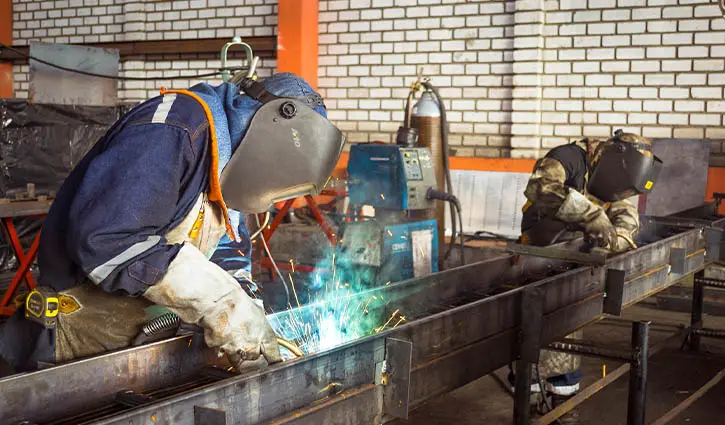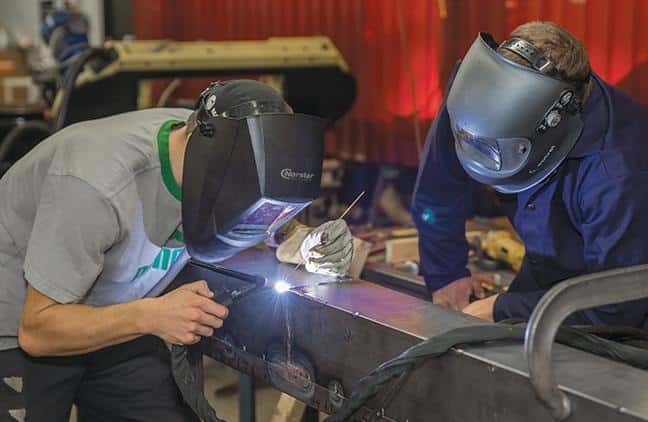Carbon Steel vs Stainless Steel: What’s the Difference? (Explained)
Steel is an entire group of metal alloys itself. Moreover, It is certain that carbon is the essential element with iron in all types of steel. Carbon steel is actually used in the case of two specific types of materials, low-alloy steel, and carbon steel.

On the contrary, stainless steel is a specially designed metal that is very well established for its quality.
However, you can easily get confused by types of steel, which are stainless or pure carbon steel. Not to mention, this happens to the majority as both types have similar looks.
Accordingly, we have come out with a comparative discussion about carbon steel and stainless steel to resolve your questions.
Let’s begin.
Before moving on to the comparison, let us give a quick overview of these two types of steel.
Table of Contents
Carbon Steel
Based on the American Iron and Steel Institute (AISI) definition, you can manufacture carbon steel if it meets the following standards-
- Adding a minimum amount of content including cobalt, chromium, titanium, etc. gives the alloying effect.
- Add copper that does not exceed 0.40%.
- You can add a maximum amount of elements up to manganese 1.65%, silicon 0.60%, copper 0.60% accordingly.
To simplify the standards, we can say that there must be no alloying elements in pure carbon steel and the primary element should be carbon and iron, respectively. Furthermore, the carbon amount may vary on different types of steel, and very few alloying materials can be added occasionally.
Thus, we can refer to carbon steel as the primary group of alloy steel but not stainless steel. Carbon steel can be classified as low and high steel, having different qualities and wide applications.
Read More: Mild Steel Vs Carbon Steel, Which Is Better?
Stainless Steel
Stainless steel is well known for its fundamental property and excellent corrosion resistance. Alongside, the mechanical properties of stainless steel can vary from other steel.
Stainless steel has high chromium content, which is greater than 10.5 percent, and low carbon content of less than 1.2%. In fact, stainless steel contains a layer of chromium that makes it excellent corrosion resistant by protecting the iron content inside from oxygen.
Stainless steel can be of many types. Among them, the most common types are Austenitic steel and Martensitic Stainless steel. Similarly, stainless steel is used in varieties of applications.
The difference between Carbon Steel and Stainless Steel
The looks of carbon steel and stainless steel may be the same. But, you will find great differences in the materials when you know the comparison between them. However, a chart has been given in the following on the comparison of Carbon Steel and Stainless Steel.
| Characteristics | Carbon Steel | Stainless Steel |
| Chromium Content | No or very low amount of Chromium | High Chromium |
| Carbon | The high amount of carbon | Low amount of carbon |
| Appearance | Low appealing | High appealing |
| Strength | High | Lower than carbon steel |
| Durability | High | Lower than carbon steel |
| Rust | Vulnerable to rust | Resistant to rust |
| Brittleness | Brittle | Less brittle |
| Wear-resistance | wear- resistant | Less wear-resistant |
| Corrosion resistance | Very low | High |
The above table shows the difference in various aspects between Carbon steel and Stainless steel. These differences lead the mentioned steels to separate groups of materials.
Above all, the main factor among the two types is the corrosion resistance that is present highly in stainless steel.
The comparison of Carbon Steel and Stainless Steel
The comparison becomes a bit critical for us when we consider the two types of carbon steel against stainless steel. Likewise, both types of carbon steel, i.e. traditional carbon steel and low-alloy steel, have different aspects that should be considered during the debate against stainless steel.
You can compare stainless steel with pure carbon steel. Here, you will find the following result-
- Stainless steel offers corrosion resistance.
- Low-carbon steels offer less strength than stainless steel. Whereas high-carbon steel vs Stainless steel shows carbon steel provides greater strength than stainless steel.
- Carbon steels are much cheaper than stainless steel
On the opposite, you will find the following facts comparing stainless steel with low-alloy steel.
- Low-alloy steel lacks corrosion resistance.
- Both low-alloy Carbon steel and Stainless steels match in several properties such as strength, weldability, etc. This way, low-alloy steels are a cost-effective alternative to stainless steel in many applications where a bit little oxidation is fine.
You can see that carbon steel, like low-alloy steel, can match some material properties with stainless steel. Also, traditional carbon steel is the opposite of this. This is why you need to be conscious while selecting steel, as low-alloy steel can be a great alternative to stainless steel for its low cost.
In contrast, you should better use stainless steel for industrial purposes where you can’t compromise the quality of the product.
Weight Comparison
According to research, the comparison of carbon steel weight vs stainless steel weight shows that stainless steel results in higher density than Carbon Steel.
- Stainless steel: 8000 Kg/m3
- Carbon steel: 7850 Kg/m3
What type of pan to purchase?
The comparison of carbon steel pan vs stainless steel pan can be made where the result will show you that stainless steel gives better usability, flexibility, corrosion resistance, and easy heat exchange over carbon steel. Undoubtedly, stainless steel is a better choice to purchase.
You can make a similar comparison of Carbon steel vs stainless steel wok. This will guide you to the same conclusion as the one done for the pan that says stainless steel wok is a better choice over carbon steel.
Conclusion
Carbon steel and stainless steel have different characteristics of their own. As a result, it is hard to conclude one type superior to another. You can see that each metal has its own disadvantages and advantages.
To wind up, the comparison and differences described in the article will give you the necessary details to make better choices while using carbon steel and stainless steel.






